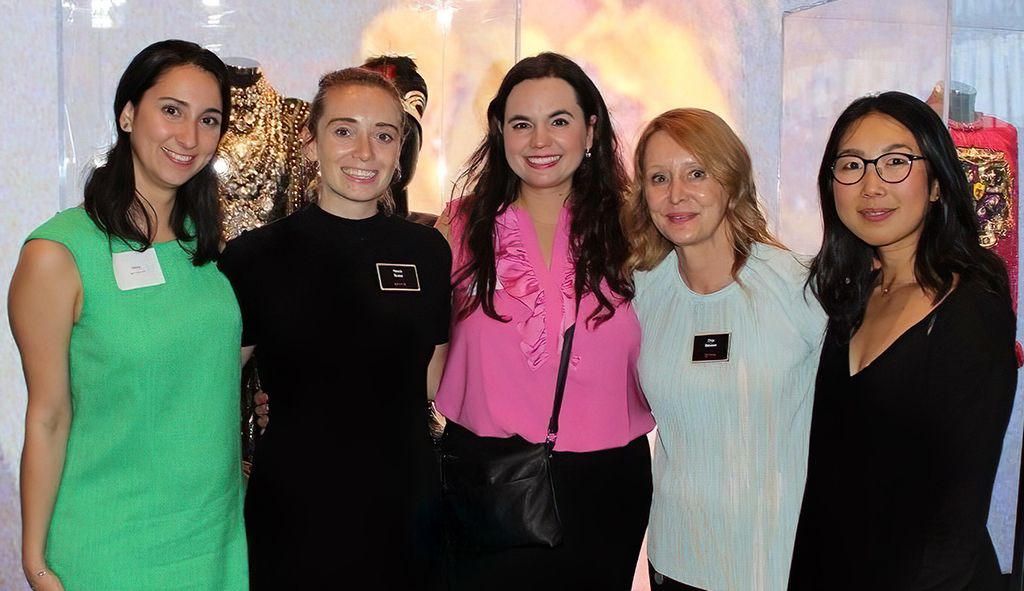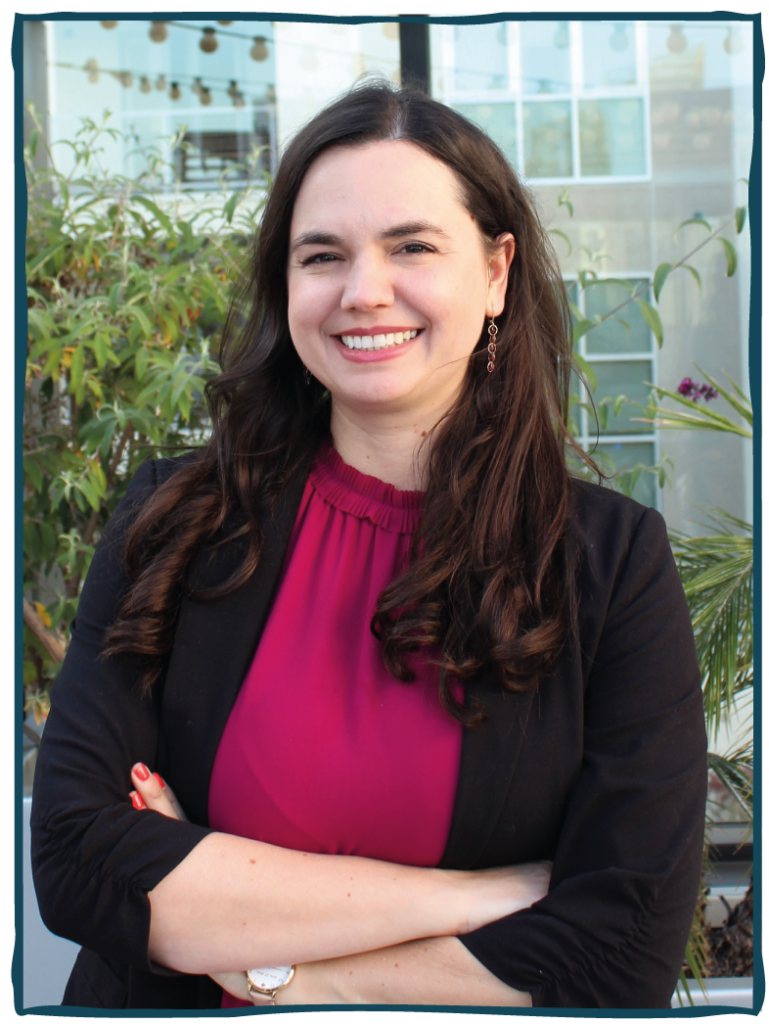By Marina Ilari |
The Los Angeles chapter of Women in Localization saw its beginnings at the end of April of 2019 with the forming of the management team, composed by Kristy Sakai, Sue Bolton, Nora Snee, Nika Allahverdi and Marina Ilari (myself). After several virtual meetings and a couple of in-person meetings, the chapter was ready to organize the first networking event in Los Angeles. And on Wednesday 21 of August, it was held at the amazing Netflix headquarters in West Hollywood!
There is nothing more exciting than having an event at Netflix in which your password to get in is “Women rock”. That definitely set the tone for the rest of the incredible evening. The reception office welcomed attendees among the display of Emmy awards, Beyonce’s wardrobes, and even a cute statue of Eleven from Stranger Things.
Networking and h’oeuvres
The first part of the evening was spent on the first floor of the venue, with an open bar and tall tables, creating an easygoing networking environment.
The excitement of the attendees was evident as people started to arrive early and formed groups of conversations while h’ouevres were being served. There was a total of 150 attendees from all areas of the localization industry, from linguists and dubbing specialists to localization companies. Everyone I personally had the chance to talk to mentioned how great it was that Women in Loc finally had a chapter in LA!
Los Angeles chapter overview
 After an hour of networking and appetizers, attendees were invited to a theater where a presentation took place. The first woman to talk was Sue Bolton, LA chapter manager of Women in Localization and part of the event planning committee, who began giving an overview of Women in Localization —which to date has 22 chapters across the world, and which mission is to foster a global community for the advancement of women and the localization industry. Sue proceeded to introduce the rest of the LA chapter management team and gave a summary of what we’re planning for the future; which includes a calendar of events and the opportunity to network through our social media channels. She also opened the doors to volunteers and sponsors. The Women in Localization organization is made possible through the support of sponsors who can provide a venue for the events, as well as drinks and food for attendees.
After an hour of networking and appetizers, attendees were invited to a theater where a presentation took place. The first woman to talk was Sue Bolton, LA chapter manager of Women in Localization and part of the event planning committee, who began giving an overview of Women in Localization —which to date has 22 chapters across the world, and which mission is to foster a global community for the advancement of women and the localization industry. Sue proceeded to introduce the rest of the LA chapter management team and gave a summary of what we’re planning for the future; which includes a calendar of events and the opportunity to network through our social media channels. She also opened the doors to volunteers and sponsors. The Women in Localization organization is made possible through the support of sponsors who can provide a venue for the events, as well as drinks and food for attendees.
Followed by Sue, we had the honor of hearing words from Loy Searle, current president of Women in Localization. Loy shared more about the values and the culture of the organization, and encouraged everyone to connect with each other and support each other!
Dubbing at Netflix
 The Women in Localization presentation was followed by a presentation by Brenna Bold, who talked about Dubbing at Netflix — what the dubbing process looks like, what it means to Netflix, and what it means to its global audience. Brenna shared how Netflix is innovating and elevating dubbing one line at a time. She also shared a video of the movie Mowgli, which was dubbed into several languages, and the clip had an extract of each one of those languages. It showed the great care that was taken for the voices and characters to sound and evoke the same emotion for viewers around the world, regardless of their locale.
The Women in Localization presentation was followed by a presentation by Brenna Bold, who talked about Dubbing at Netflix — what the dubbing process looks like, what it means to Netflix, and what it means to its global audience. Brenna shared how Netflix is innovating and elevating dubbing one line at a time. She also shared a video of the movie Mowgli, which was dubbed into several languages, and the clip had an extract of each one of those languages. It showed the great care that was taken for the voices and characters to sound and evoke the same emotion for viewers around the world, regardless of their locale.
Right after the dubbing presentation, we were introduced to two members of the dubbing team at Netflix who shared their journeys into localization. Not only were their life stories inspiring, but also they were not conventional paths to the industry, which goes to show just how diverse the localization industry can be, and how rich it is made by the contribution of different specializations and skills.
Join us
During the last part of the event, attendees were escorted back to the main area to continue mingling and talking to colleagues for approximately another hour. And, at around 9:30 pm, the event reached its end. But most importantly, it marked the beginning of the exciting opportunities to connect and network in the Los Angeles chapter!

If you are interested in the Women in Localization Los Angeles chapter make sure you connect with us:
• To learn more: www.womeninlocalization.com
• To register: Women In Localization Sign-Up Page (Register under AMER-USA-Los Angeles Chapter)
• To follow:
- Facebook: Women in Localization Los Angeles
- Twitter: Women in Localization Los Angeles
- LinkedIn: WL LA LinkedIn Group
• Tag posts with #WLLA





























